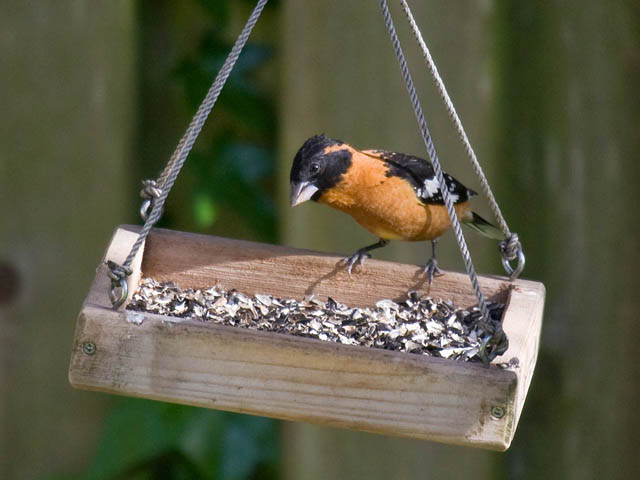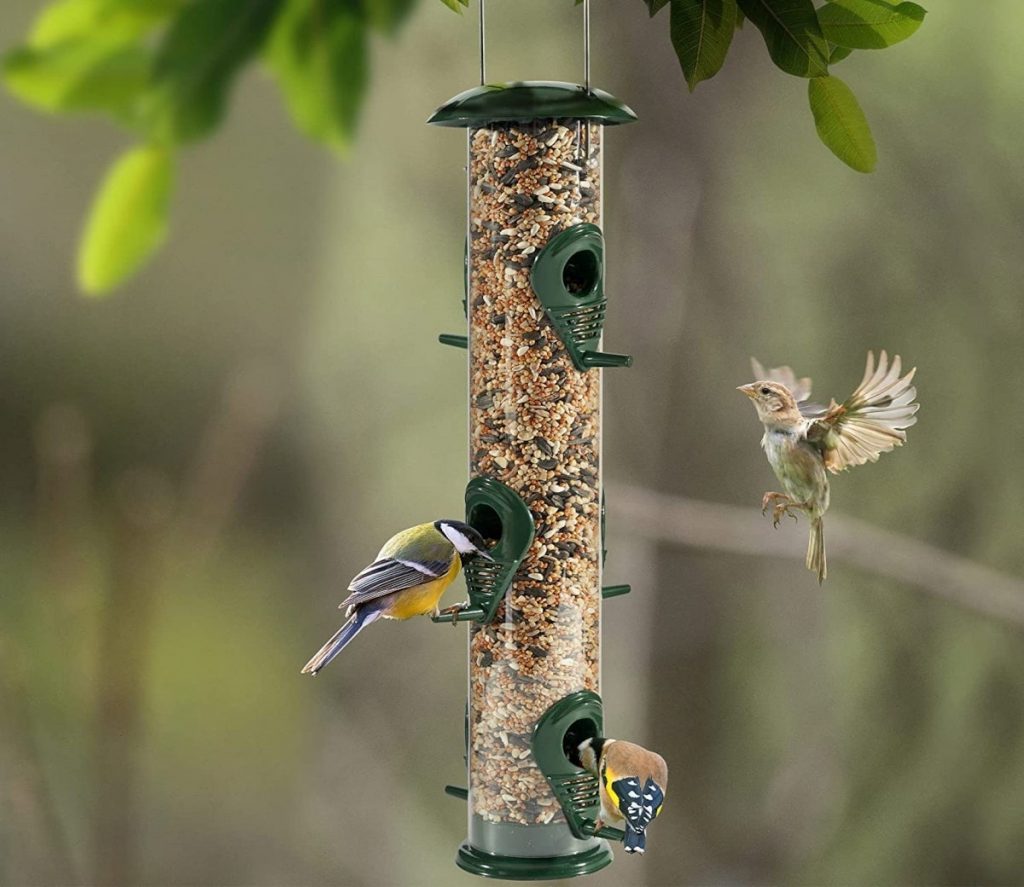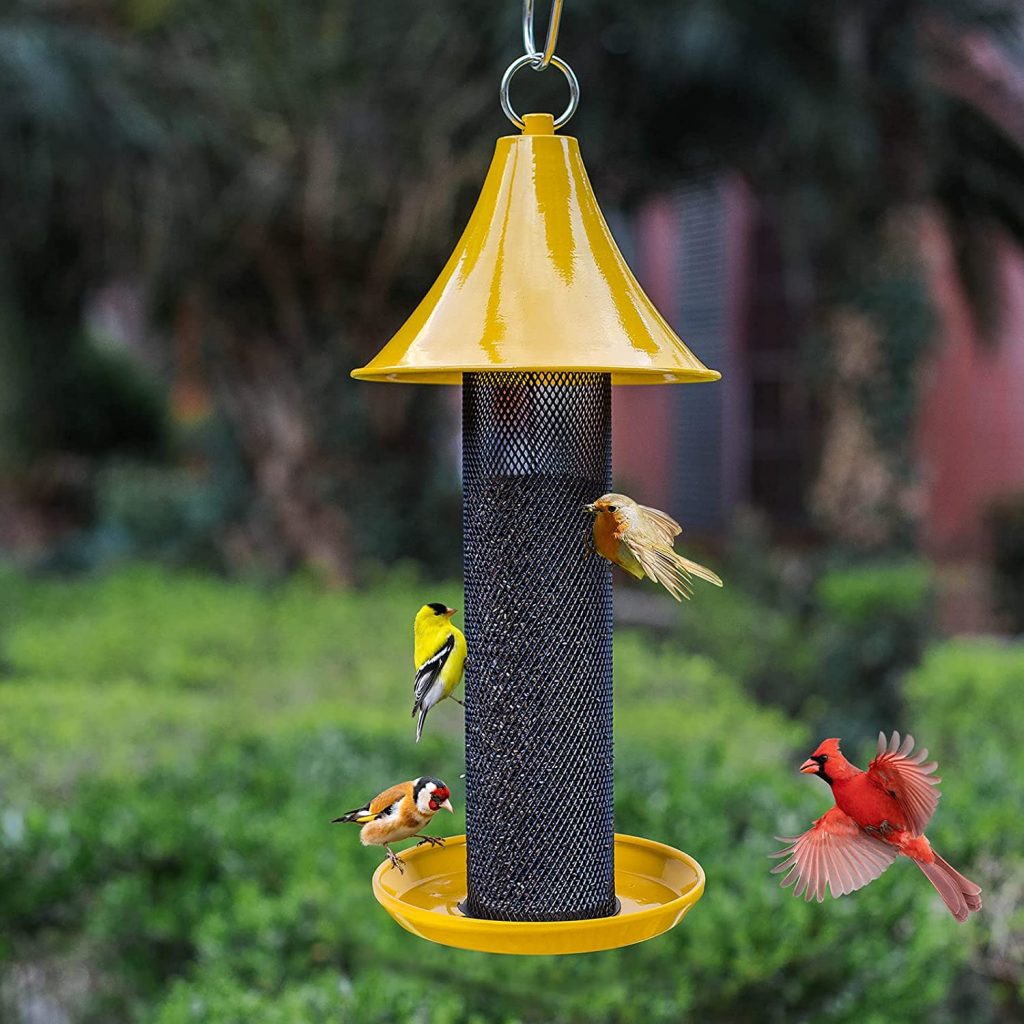In the world of birdwatching, there are countless ways to attract different species of birds to your backyard. Whether you’re a seasoned bird enthusiast or just starting out, having the right bird feeder can make all the difference. This article explores seven major types of bird feeders that cater to the unique preferences of various birds. From tube feeders for finches and chickadees to hopper feeders for cardinals and grosbeaks, each feeder is designed to meet the dietary needs and feeding habits of specific bird species. Discover how platform, thistle, nectar, fruit, and suet feeders can help you create an inviting haven for a wide variety of feathered friends.
Platform feeders
Platform feeders are a popular choice for bird enthusiasts as they attract a wide variety of birds. From sparrows and doves to grosbeaks and finches, these feeders offer a generous feeding area that allows multiple birds to gather and eat together. The open design ensures easy access to food and allows for better visibility of the birds. Woodpeckers also find platform feeders appealing, making them a versatile option for attracting different species of birds.
Tube feeders
Tube feeders are specifically designed to cater to the feeding habits of finches. With their small perches and seed ports, tube feeders are an excellent choice for attracting these colorful birds to your backyard. In addition to finches, some chickadees and nuthatches also find tube feeders appealing. The narrow openings of tube feeders prevent larger birds from accessing the food, making them ideal for smaller species.
Hopper feeders
Hopper feeders present the perfect combination of platform and tube feeders. These feeders feature a container that holds the birdseed and dispenses it gradually as the birds consume it. This design not only attracts a range of birds but also helps to keep the seed dry and fresh. Cardinals and grosbeaks are particularly fond of hopper feeders due to their larger size and the easy access they offer to the food.
Thistle feeders
Thistle feeders, also known as Niger feeders, are specifically designed to cater to the dietary preferences of finches and small songbirds. These feeders contain tiny ports that allow the birds to extract the fine seeds without any hassle. Goldfinches and siskins are especially attracted to thistle feeders, making them a must-have for anyone wanting to attract these vibrant birds to their backyard.
Nectar feeders
Nectar feeders are designed to meet the unique dietary needs of hummingbirds and orioles. These feeders feature a specialized container that holds a sweet nectar solution, mimicking the flowers these birds naturally feed on. The vibrant colors and strategically placed feeding ports of nectar feeders are sure to attract these delightful creatures. Some woodpeckers also enjoy nectar feeders, offering a chance to observe these fascinating birds up close.
Fruit feeders
For those looking to attract a specific group of birds, fruit feeders are a great option. These feeders are designed to accommodate slices or chunks of fruits, which mimic the natural diet of birds such as mockingbirds, thrashers, robins, orioles, and tangers. The sweet and juicy offerings of fruit feeders are sure to entice these species and provide them with a nutritious treat.
Suet feeders
Suet feeders are a favorite among woodpeckers, providing them with a high-energy food source that they can easily cling to while feeding. The suet cakes or blocks offered in these feeders are made from animal fat mixed with various ingredients such as seeds, nuts, and dried fruits. In addition to woodpeckers, suet feeders also attract wrens, nuthatches, warblers, and chickadees. The availability of suet throughout the year makes these feeders a valuable resource for these birds, especially during colder seasons.

Finches and chickadees
Finches and chickadees have a particular preference for tube feeders. The small perches and seed ports of these feeders cater to their feeding habits, allowing them to easily access the seeds while keeping larger birds at bay. By providing tube feeders with their favorite seeds, such as sunflower or thistle seeds, you can create a welcoming environment for these delightful birds in your backyard.
Cardinals and grosbeaks
Cardinals and grosbeaks prefer hopper feeders due to their larger size and the ample feeding space they offer. These feeders are designed to accommodate the larger beaks of these birds, allowing them to comfortably access the seeds. By placing hopper feeders filled with their favorite seeds, such as sunflower seeds, you can invite these colorful and melodious birds to visit your yard.

Woodpeckers and nuthatches
Woodpeckers and nuthatches have a strong affinity for suet feeders. The high-fat content of suet provides them with the energy they need for their active lifestyles. These birds can easily cling to the suet cakes or blocks, allowing them to feed comfortably while showcasing their remarkable acrobatic skills. By offering suet feeders, you can attract these captivating birds and enjoy their unique behaviors up close.
In conclusion, selecting the right bird feeder plays a crucial role in attracting specific bird species to your backyard. Platform feeders attract a diverse range of birds, while tube feeders cater to the feeding habits of finches and some chickadees and nuthatches. Hopper feeders combine the benefits of platform and tube feeders, attracting a variety of birds, including cardinals and grosbeaks. Thistle feeders are specifically designed for finches and small songbirds. Nectar feeders are perfect for hummingbirds, orioles, and some woodpeckers. Fruit feeders entice species like mockingbirds, thrashers, robins, orioles, and tangers. Finally, suet feeders are beloved by woodpeckers, wrens, nuthatches, warblers, and chickadees. By carefully selecting and placing these feeders in your backyard, you can create a bird-friendly environment that will attract a wide array of beautiful and fascinating birds.

Leave a Reply